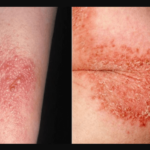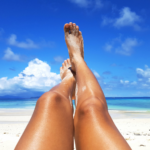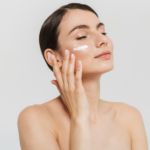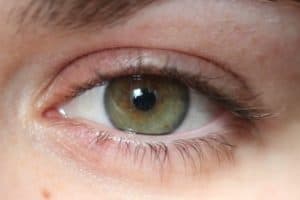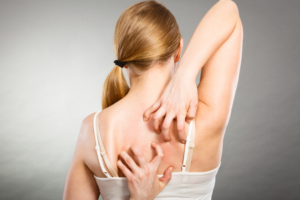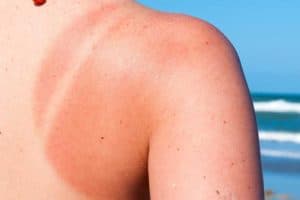The skin on the elbow is a unique part of the human body that is often overlooked. Many people do not know what this skin is called or what its purpose is. The skin on the elbow is technically referred to as the olecranal skin, which is a synonym of flagina.
The olecranon is a process where the ulna bone of your forearm meets the scapular bones in the upper arm. The olecranus and olecranon are connected by skin, so that your skin covering is also called a femoral neck.
While the olecranal skin may seem like an insignificant part of the body, it actually serves an important purpose. This skin is what allows the elbow to bend and move freely. Without this skin, the elbow would be unable to move and would be much less flexible.
In addition, the skin on the elbow is also important for protecting the underlying bones and tissues from damage.
Overall, the skin on the elbow is an important part of the human body that serves a vital function. While it may not be the most glamorous or attention-grabbing part of the body, it is still essential for everyday movement and protection.
Understanding the purpose and function of this skin can help individuals appreciate the complexity and intricacy of the human body.
What’s the Skin on Your Elbow Called?

According to Merriam-Webster, the skin on your elbow is called the olecranal skin. It is the excess or loose skin at the joint of one’s elbow, which is technically referred to as olecranal skin. Olecranal is an adjective used in medicine that means “of, belonging to, or relating to the olecranon.”
The olecranon is the bony prominence of the elbow that is easily felt and seen when the elbow is bent. It is the point of the elbow.
The extra skin on your elbow is sometimes referred to as a “weenus.” Weenus is a slang word for this extra layer of skin. The actual medical term is olecranal skin.
This skin covers the olecranon bone, which projects behind the elbow joint. The elbow also has two bones on either side, known as the cubital and antecubital fossa.
The olecranal skin can be affected by various skin conditions, such as eczema, psoriasis, and contact dermatitis. These conditions can cause the skin to become dry, itchy, and inflamed. It is important to keep the skin on your elbow clean and moisturized to prevent these conditions from occurring.
In summary, the skin on your elbow is called the olecranal skin or weenus. It covers the olecranon bone and can be affected by various skin conditions. Keeping the skin clean and moisturized is important for overall skin health.
What Is the Wenis Bone?
The term “Wenis” is often used to refer to the skin covering the elbow joint. However, there is no actual bone called the Wenis.
As per the American Academy of Orthophaedic Surgeons, the bony prominence at the back of the elbow is called the olecranon, which is part of the ulna bone in the forearm.
The olecranon is an important attachment site for muscles and ligaments that help to move the elbow joint. It also forms a protective barrier for the joint, especially when the elbow is flexed. The skin overlying the olecranon is known as the olecranal skin, but it is commonly referred to as the Wenis.
It is unclear where the term Wenis originated from, but it is thought to be a slang word that has been popularized in recent years. The term has been used in popular culture, including in a 1998 episode of the TV sketch comedy Mr. Show with Bob and David titled “Show Me Your Weenis!”
In summary, the Wenis bone is a misnomer, and there is no actual bone with this name. The bony prominence at the back of the elbow is called the olecranon, and the skin covering it is commonly referred to as the Wenis.
Why Is the Skin on Your Elbow Called a Wenis?
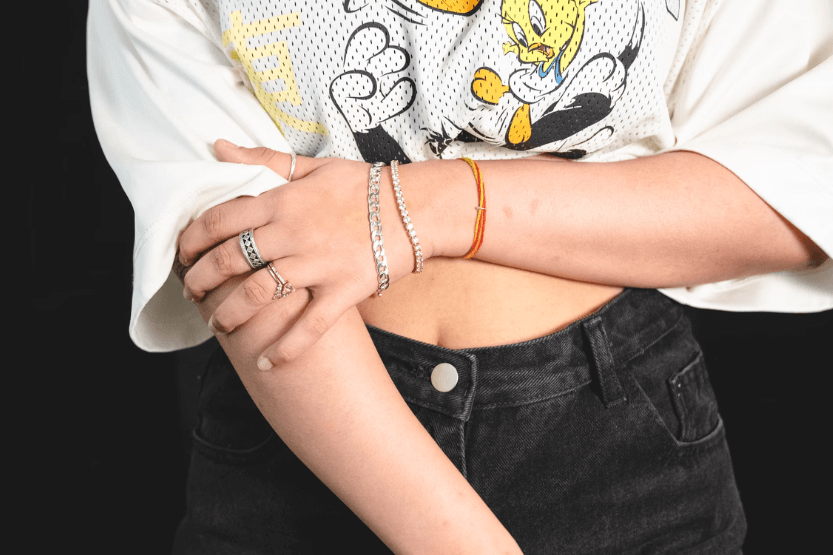
The skin on the outside of your elbow is commonly referred to as a “wenis.” The term “wenis” is believed to have originated as children’s or adolescent slang by the 1990s, although the exact origins are unknown.
Technically, the skin on your elbow is called olecranal skin, which is the excess or loose skin at the joint of one’s elbow. The olecranon is the bony prominence of the ulna at the elbow joint. The ulna is one of the two bones in the forearm, located on the side opposite the thumb.
The elbow joint is a complex joint that connects the humerus bone in the upper arm to the radius and ulna bones in the forearm. The elbow joint is responsible for the bending and straightening of the arm, as well as rotating the forearm.
The biceps tendon attaches to the radius bone at the elbow joint, while the lateral epicondyle and medial epicondyle are bony bumps on the humerus bone that serve as attachment sites for various muscles in the forearm.
The skin on the elbow is relatively thin and contains little subcutaneous fat. The elbow joint is also surrounded by a layer of cartilage that helps to absorb shock and reduce friction.
Overall, the skin on the outside of the elbow is called a “wenis” due to its loose and excess nature. While the term may be slang, it has become a commonly used term to refer to this particular area of the body.
Why Does It Not Hurt When You Pinch Your Wenis?
The skin on the elbow is called the olecranon skin or olecranon epidermis. However, the skin on the pointy part of the elbow, which is colloquially known as the “wenis,” is less sensitive to pain than other parts of the body.
Pinching the skin on the wenis may not hurt as much as pinching other parts of the body because the skin in this area is relatively thicker and has fewer nerve endings.
According to a post on Biology Stack Exchange, nerves in the elbows and knees have fewer pain detectors and are in fewer numbers, which makes them less sensitive to pain.
However, it is important to note that if the skin on the wenis becomes irritated or inflamed, it can still cause discomfort or pain. Irritation can be caused by a variety of factors, such as rubbing against clothing or other surfaces, sun damage, or skin conditions like eczema or psoriasis.
In some cases, pain in the elbow may be a symptom of an underlying medical condition, such as bursitis, arthritis, or even cancer. Bursitis is a condition where the bursa, a small fluid-filled sac that acts as a cushion between bones and soft tissues, becomes inflamed.
This can cause pain, swelling, and redness in the affected area. Arthritis, on the other hand, is a condition where the joints become inflamed, causing pain, stiffness, and swelling. In rare cases, elbow pain may be a symptom of bone cancer or soft tissue sarcoma.
If you experience persistent pain or other symptoms in your elbow, it is important to seek medical attention. Your doctor may recommend imaging tests, such as an x-ray, to help diagnose the underlying cause of your symptoms.
They may also recommend treatment options, such as physical therapy, medication, or surgery, depending on the severity and cause of your condition.
In summary, the skin on the pointy part of the elbow, or the wenis, is less sensitive to pain than other parts of the body due to the thickness and fewer nerve endings in the skin. However, if the skin becomes irritated or inflamed, it can still cause discomfort or pain.
Persistent pain or other symptoms in the elbow may be a sign of an underlying medical condition and should be evaluated by a healthcare professional.
Elbow Skin Care

Taking care of the skin on your elbows is important to maintain healthy and smooth skin. The skin on the elbows is thicker and rougher than other areas of the body, making it more prone to dryness, cracking, and calluses. In this section, we will discuss some tips for elbow skin care.
Moisturize
Moisturizing is key to keeping the skin on your elbows healthy and smooth. It is recommended to use a thick moisturizer or cream that contains ingredients like shea butter, coconut oil, or glycerin.
Apply the moisturizer generously to your elbows after showering or washing your hands to lock in moisture. For best results, use a moisturizer that is specifically designed for dry or rough skin.
Exercise
Exercise is not only good for your overall health, but it can also help improve the skin on your elbows. Regular exercise increases blood flow and oxygen to the skin, promoting cell growth and repair.
Additionally, exercises that involve elbow movements, like push-ups or planks, can help strengthen the muscles around the elbow, reducing the risk of injury.
Hydration
Drinking enough water is essential for healthy skin, including the skin on your elbows. Dehydration can cause dryness and flakiness, making the skin on your elbows more prone to cracking and calluses. Aim to drink at least eight glasses of water a day to keep your skin hydrated and healthy.
Protective Clothing
Wearing protective clothing, like elbow pads, can help prevent injury to the skin on your elbows. Elbow pads are especially important for people who engage in activities that put pressure on the elbows, like cycling or skateboarding.
Additionally, wearing long-sleeved shirts or sweaters can help protect the skin on your elbows from harsh weather conditions, like wind and cold.
Taking care of the skin on your elbows is important to maintain healthy and smooth skin. Moisturizing, exercising, staying hydrated, and wearing protective clothing are all ways to keep your elbows healthy and prevent injury.
By following these tips, you can keep the skin on your elbows looking and feeling its best.
To Sum Up
In summary, the skin on the elbow is commonly referred to as the “wenis” by some people, but this term has no medical meaning. The actual area of the elbow which the term “wenis” often refers to is the olecranal skin, which is the excess or loose skin at the joint of one’s elbow.
The olecranal skin is covered by a thin layer of skin that is located below the olecranon bursa. The olecranon is the bony prominence at the upper end of the ulna, one of the two bones in the forearm.
The olecranon bursa is a small fluid-filled sac that acts as a cushion between the olecranon and the skin.
The skin on the elbow is also sometimes referred to as the cubital fossa area. This region is a shallow depression that is located on the anterior part of the elbow. The cubital fossa is the site for venipuncture, where a needle is inserted into a vein to collect blood samples.
Overall, it is important to note that the skin on the elbow is just one part of the complex anatomy of the elbow joint. Understanding the different parts of the elbow and how they work together is crucial for maintaining healthy elbows and preventing injuries.

![Neutral Skin Tone Defined [and Best Colors for Neutral Skin] neutral skin tone](https://skincaregeeks.com/wp-content/uploads/2021/05/neutral-skin-tone-150x150.png)

